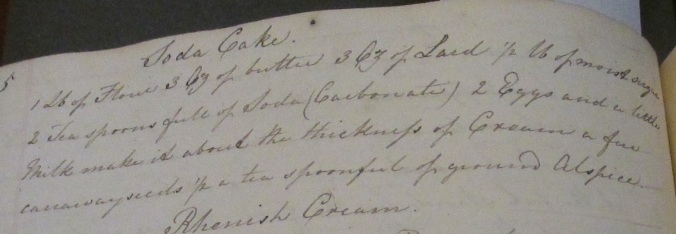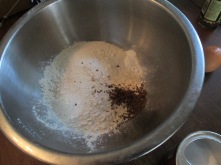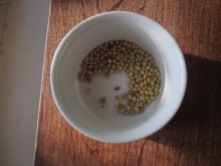This is the fourth and final post featuring a recipe from the Earl of Roden Commonplace Book held at the Scripps College, Denison Library. Read the first post here for information about this manuscript.
Flipping through the Earl of Roden Commonplace Book in the Denison Library at Scripps a few months ago, I paused when I saw a recipe for “Portland Cakes.” They looked so familiar! These buttery, sweet cakes are flavored with rosewater and brandy and dotted with currants, just like the “Potingall/Portugal Cakes” Alyssa wrote about a few months ago. The “Portland Cakes” in the Earl of Roden fall into the broad category of “Portugal” cakes seasoned with fortified wines like brandy and sack that were imported to the British Isles from the Iberian peninsula.
The Recipe
To make Portland Cakes.
Six ounces of Butter well beaten, six ounces of Loaf Sugar,
the Yolks of two eggs, the white of one, 1/4 of a pound of
currants, two spoonfuls of Rose Water 3/4 of a Pound of
flour, you may add a small quantity of Brandy if
you please. Make them into little cakes and bake them
a quarter of an hour __ When you put them into the
Oven, strew over them some grated Sugar. ___
Our Recipe is basically the same.
6 oz butter, softened
6 oz sugar (additional sugar for sprinkling)
2 egg yolks
1 egg white
1/4 lb currants
2 t rosewater
3/4 lb flour
2 t brandy
Preheat oven to 350F.
Cream together butter and sugar. I used my stand mixer for this recipe, but it could work with a hand mixer or a large bowl and a sturdy spoon. When the mixture is pale and fluffy, add rosewater and brandy. Separate and beat the eggs before adding them to the mix. Add the flour. When the flour is completely incorporated, add the currants.
Divide the mixture into 12 cakes and bake in a greased muffin tin for 40 minutes. If you’d like to make smaller cakes (I plan to next time) divide the mixture into 18 or 24 parts and bake in two greased muffin tins for approximately 25 minutes, until golden brown.
As you can see from the photos, I completely forgot to dust these with sugar before I put them in the oven, but they were toothsome all the same.
The Results
Portland Cakes are sweet, dense, and fragrant. I enjoyed one hot from the oven with a cup of tea. I brought the rest to a picnic and they were a big hit with adults and kids alike.
Next time I’ll make smaller cakes in a muffin pan (or even try a Madeline pan like Alyssa) because the crunchy exterior was my favorite part. I might also add a pinch of salt and cut the sugar a bit.
But mostly I think a Potingall/Portugal/Portland Cake bake-off is in order. Alyssa and I are going to arrange a taste-test and let you know which recipe we like best!
- portland cakes
- portland cakes
- portland cakes
- portland cakes
- portland cakes
- portland cakes
- portland cakes
- portland cakes
- portland cakes
- portland cakes
- portland cakes
- portland cakes






















































You must be logged in to post a comment.